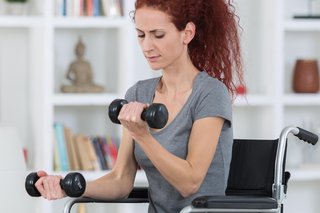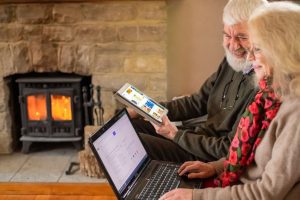By Dr Emma Tenison
Why was the research needed?
Parkinsonism is a term that describes several health conditions which cause problems including slow movement, stiffness and difficulty walking. These include Parkinson’s Disease (PD) and related conditions such as progressive supranuclear palsy, Lewy body dementia and multiple system atrophy.
We know that having parkinsonism can affect people’s quality of life. People with these conditions may have other health problems such as depression, memory problems or bladder issues. As parkinsonism gets worse over time, patients may need the help of a caregiver. Being a caregiver can put a strain on the caregiver’s own physical and mental health.
Parkinsonism is more common as people get older. This means that patients are often also living with other long-term health problems, as well as frailty. People who are older, have multiple health problems, or have memory problems are often left out from research studies.
We wanted to understand the needs and experience of a group of people with parkinsonism that represented the many different people with these conditions in the ‘real world’. We also wanted to learn about the experiences of unpaid caregivers.
What happened during the study?
We posted invitations to patients with parkinsonism living in the area around Royal United Hospital, Bath. Any friend or family member who supported someone with parkinsonism as their “caregiver” was also invited to take part. After participants agreed to take part, they were sent a questionnaire booklet to fill in at home.
Some patients were not able to decide for themselves about whether to take part, for example those with advanced dementia. In these cases, we asked a close friend or family member whether the person with parkinsonism would want to take part. The close friend or family member then filled out questionnaires for them.
We telephoned people who did not respond to the invitation letter to answer their questions and support them to take part if they wanted to do so.
What public involvement was there in the study?
When we were designing the study, we asked for feedback from some members of the public with Parkinson’s. They helped us to design our participant information booklet and consent forms. They also told us what they thought was the most suitable word to use to refer to a friend or family member who supports someone with Parkinson’s without being paid to do that.
Who took part in the study?
We invited over 1000 patients with parkinsonism. 542 of those patients agreed to take part in the study. This included 38 patients who were unable to make their own decision about whether to take part. We also recruited 376 caregivers.
We are hugely grateful to all of our participants who gave up their time to take part in this study.
What were the results of the study?
-
The benefit of telephone calls to support recruitment
We were able to telephone 650 of the 678 patients who did not respond to the postal invitation. 167 patients decided to take part after one or more telephone calls with the study team.
We found that the telephone calls helped us to recruit certain people who might not have joined the study otherwise. People recruited after a telephone call were more likely to be female, living in a care home, diagnosed with a rarer type of parkinsonism and to be frailer.
-
A study group which more closely matched the ‘real world’
We compared the participants who took part in this study to the people we know from medical records are living in the UK with parkinsonism. We found that the participants who took part in our study more closely matched the ‘real world’ situation than people who usually take part in parkinsonism studies. For example, over half of our study participants were over the age of 75 years and some people living in a care home took part.
This suggests that the ways we recruited – our “recruitment strategies” – helped us to be more “inclusive”.
-
The presence of other health conditions and symptoms affecting everyday life
Our results showed that people with parkinsonism are often also living with frailty, muscle loss, and disability. These often overlap. Almost two thirds of people had two or more long-term health conditions as well as parkinsonism. We found that many people also had symptoms such as bladder and bowel problems.
How has this study helped patients and researchers?
We have published an article about our successful recruitment strategies in the scientific journal Age and Ageing. We hope that this will help other researchers to design their studies to include a wider range of patients. We have also presented findings from this study at national and international scientific conferences.
We will soon be publishing our findings about the symptoms and problems experienced by our more representative group of people with parkinsonism, as well as what we learnt about caregivers.
We are now running a trial called “Proactive and Integrated Management and Empowerment In Parkinson’s Disease (PRIME): Designing a New Model of Care – A Randomised Controlled Trial”. We used what we learnt about better ways of recruiting participants when recruiting people to this trial.
Also, many PRIME Cross-sectional study participants were happy to be contacted about future studies. This helped us to recruit enough participants for the PRIME trial. Our findings about which symptoms are a particular bother for patients helped us to design the PRIME model of care which we are testing in the trial.






